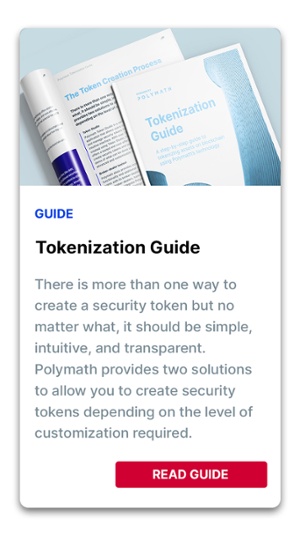Security token issuance requires a network of custody agents, broker-dealers, legal firms, cap table management providers and KYC/AML providers, among others.
First in the tokenization journey is creating the ecosystem.
When looking to tokenize an asset, issuers need to think of the full digital asset lifecycle and ensure that each piece fits together, from beginning to end. This involves thinking of the ecosystem that will facilitate the operations related to the token, from actual token issuance to finding investors.
Just like how the traditional financial security system involves a complex multi-layering of various parties including legal, financial, and compliance institutions, security token operations are underlied by a complex network consisting of various technical, business, legal, marketing, and financial participants. Specifically, security token issuance requires a network of custody agents, broker-dealers, legal firms, cap table management providers and KYC/AML providers, among others.
Let’s explore various ecosystem participants before taking a look at what this process can look like for issuers, using Polymath’s ecosystem as an example.
Key Ecosystem Participants
Various ecosystem participants might be involved in an issuer’s tokenization journey. Some, like custody providers or broker-dealers, might be familiar to traditional investing, while others like token sale platforms might be more unique to digital assets.
Key ecosystem participants typically include the following:
- Custodians: Charged primarily with safekeeping funds and security tokens but also able to assist with portfolio segregation and ownership rights management, qualified custodians with stringent security certifications can help provide peace of mind to investors and issuers alike.
- Token Sale platforms: Typically including investor portals, onboarding services, and potentially also fund collection and token distribution services, token sale platforms give issuers a simplified way to manage investor onboarding and token sales to either the general public or a list of approved investors.
- KYC/AML providers: Securities regulation requires issuers to verify their tokenholders’ identities through a KYC process, and by integrating KYC providers with tokenization technology instead of completing it through traditional manual processes, investors can get verified in a few clicks and be added to the token’s whitelist of approved investors in real-time.
- Capitalization Table Management: Cap table management platforms allow issuers to manage their company equity, view holds, and manage investors, with some even acting as a registrar to support regulatory compliance.
- Legal services: Legal firms that specialize in the security token space can assist issuers in structuring their offering and play a crucial role in regulatory filing, as well as in preparation and submission of other key documents. Each jurisdiction also has its own requirements that can require specialized support.
- Advisory services: Advisory firms can help you plan, create, and launch your offering, and many also hold broker-dealer licenses, allowing them to list securities and facilitate the relationship between buyers and sellers.
- Tax services: Tax services help security token issuers remain compliant and track their digital asset portfolios and optimize their taxes while taking much of the complexity out of tasks like tax calculations and reporting.
- Marketing: A marketing agency can spread the word of a raise and drive engagement with your offering by creating promotional materials, assisting in launching your website, putting out press releases, listing the offering on STO aggregators, and engaging with potential investors on social media platforms.
 Working with the Ecosystem
Working with the Ecosystem
Some security token issuance platforms try to build “all-in-one” solutions and offer a full end-to-end service to their clients. These closed systems can provide more convenience to issuers by removing the need for issuers to find ecosystem providers to collaborate in tokenization with themselves, but they often face issues with scalability and customization.
To bypass these issues, other token issuance platforms prefer to take a more modular approach and focus only on specializing in one specific service while ensuring tokens issued on their platform will be tradeable on secondary markets. This is the approach taken by Polymath.
While Polymath’s technology is strictly for token creation and management, it integrates smoothly with a large ecosystem of service providers so that issuers can create a bespoke end-to-end solution that fits their needs. This lets each issuer create a logical and compliant process, regardless of their asset, goals, or jurisdictional requirements.
Unlike rigid “all-in-one” platforms, Polymath provides issuers with the flexibility to work with any providers they choose, although those in our Service Provider Ecosystem offer already-integrated technology and often a faster path to go-live. While it might seem daunting to new token issuers to need to think about working with various different providers, many ecosystem participants are eager to team up to foster greater market adoption of security tokens across jurisdictions.
Securely digitizing assets through tokenization requires a strong ecosystem of industry specialists. Joining forces with tokenization providers like Polymath allows us to bring the full power of sophisticated technology and regulatory compliance to users.
“Securely digitizing assets through tokenization requires a strong ecosystem of industry specialists”, emphasizes Martin Kreitmair, CEO of ecosystem member Tangany. “By teaming up with Polymath we strengthen that ecosystem in the EU. Joining forces with tokenization providers like Polymath allows us to bring the full power of sophisticated technology and regulatory compliance to users.”
Download our Tokenization Guide to learn more about tokenizing assets on the blockchain using Polymath technology.

